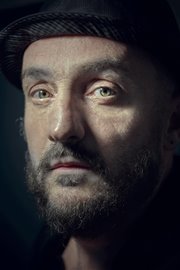Environment - 1st Prize
The End of Trash - Circular Economy Solutions
Luca Locatelli
For National Geographic
For National Geographic
07 August, 2019
Geothermal energy warms this greenhouse in the lava fields of Grindavik, Iceland. Barley grown in inert volcanic pumice is genetically engineered to produce Epidermal Growth Factor (EGF), a protein that stimulates cell growth and which is used in luxury cosmetics. EGF has a market value of US$10,000 a gram.
For centuries, industrialized countries have followed a take-make-waste linear economy: raw materials are gathered and transformed into products that are sold and then discarded as waste. Value is created in this economic system by producing and selling as many products as possible. The model not only drains natural resources, but also—in the demands it makes in energy consumption and because of a reliance on fossil fuels—exacerbates global heating. A circular economy offers an alternative by decoupling economic activity from the consumption of finite resources. It is based on designing waste and pollution out of the system, keeping products and materials in use, and regenerating natural systems. Farmers, manufacturers and governments across the globe are taking steps to experiment with and implement a circular economy as part of their efforts to address the climate crisis.

Luca Locatelli
Luca Locatelli is an environmental photographer and film-maker focused on the relations between people, science-technology and the environment. Locatelli produces his stories ...
Through our education programs, the World Press Photo Foundation encourages diverse accounts of the world that present stories with different perspectives.
Our exhibitions showcase stories that make people stop, feel, think and act to a worldwide audience.
Our annual contest recognizes and rewards the best in photojournalism and documentary photography.
